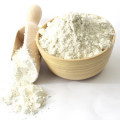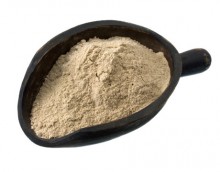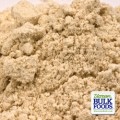 Loading... Please wait...
Loading... Please wait...- Home
- About Us
- Shipping, Returns & FAQ's
- Contact Us
-
For Your Information
- Canadian Customers Have a Choice if Shipping Via UPS
- Aura Cacia Homemade Aromatherapy Recipes
- Bella Nella Altered Art & Paper Crafts Blog
- Forms of Herbal Preparations
- Laundry Tips To Conserve Energy Blog from The Laundress
- The Story of Frontier Natural Products Co-Op
- Sovereign Silver Hydrosol and Aloe Protocol Stops Downward Spiral of Gut Dysbiosis
- Disclaimers
- Recommended Links
- RSS/Recent News
- The Story of Typhoon Housewares
- Reviews/Testimonials
- Raw Ingredients for Mfg
- Home
- Grocery
- Flour/Grains
- Buckwheat Flour Bulk
Buckwheat Flour Bulk
Product Description
The fruit is an achene, similar to sunflower seed, with a single seed inside a hard outer hull. The starchy endosperm is white and makes up most or all of buckwheat flour. The seed coat is green or tan, which darkens buckwheat flour. The hull is dark brown or black, and some may be included in buckwheat flour as dark specks. The dark flour is known as 'blé noir' ('black wheat') in French, along with the name sarrasin ('saracen').
Buckwheat pancakes, sometimes raised with yeast, are eaten in several countries. They are known as buckwheat blinis in Russia, galettes in France (savoury crêpes which are especially associated with Brittany), ployes in Acadia and boûketes in the Wallonia region of Belgium. Similar pancakes were a common food in American pioneer days. They are light and foamy. The buckwheat flour gives them an earthy, mildly mushroom-like taste.
Buckwheat contains no gluten and can thus be eaten by people with coeliac disease or gluten allergies. Many bread-like preparations have been developed. However, Buckwheat can be a potent and potentially fatal allergen by itself. In sensitive people, it provokes IgE-mediated anaphylaxis.
Buckwheat contains a glucoside named rutin, a medicinal chemical that strengthens capillary walls, reducing hemorrhaging in people with high blood pressure and increasing microcirculation in people with chronic venous insufficiency.
Buckwheat contains D-chiro-inositol, a component of the secondary messenger pathway for insulin signal transduction found to be deficient in Type II diabetes and Polycystic ovary syndrome (PCOS). It is being studied for use in treating Type II diabetes. Research on D-chiro-inositol and PCOS has shown promising results.
A buckwheat protein has been found to bind cholesterol tightly. It is being studied for reducing plasma cholesterol in people with hyperlipidemia.
In recent years, buckwheat has been used as a substitute for other grain in gluten free beer. Although it is not a cereal, buckwheat can be used in the same way as barley to produce a malt that can form the basis of a mash that will brew a beer without gliadin or hordein (together gluten) and therefore can be suitable for coeliacs or others sensitive to certain glycoproteins.
Please select above from whole unhulled dark buckwheat (high in fiber) or the light hulled buckwheat flour.
References
wikipedia.org
Recipes
ChowHound Blog on Uses for Buckwheat Flour
How to Use Buckwheat in Gluten-Free Recipes
Read More About It
True Grist Buckwheat Flour and Cornmeal Recipes by Patricia B. Mitchell
The South Beach Diet Cookbook by Dr. Arthur Agatston MD
The No-Gluten Cookbook: Delicious Recipes to Make Your Mouth Water by Richard Marx, Nancy Maar
You Recently Viewed...
Currency Converter
Choose a currency below to display product prices in the selected currency.



























